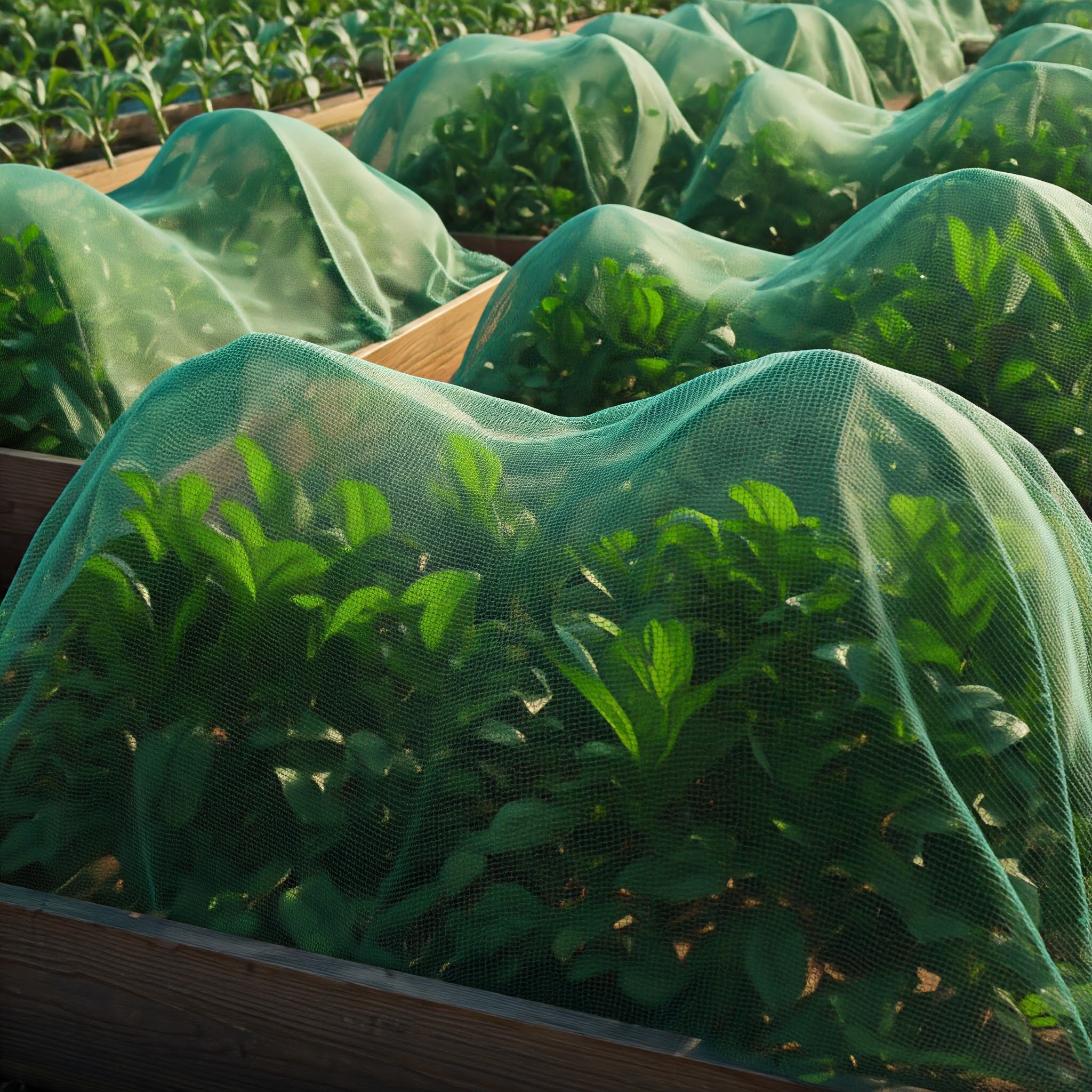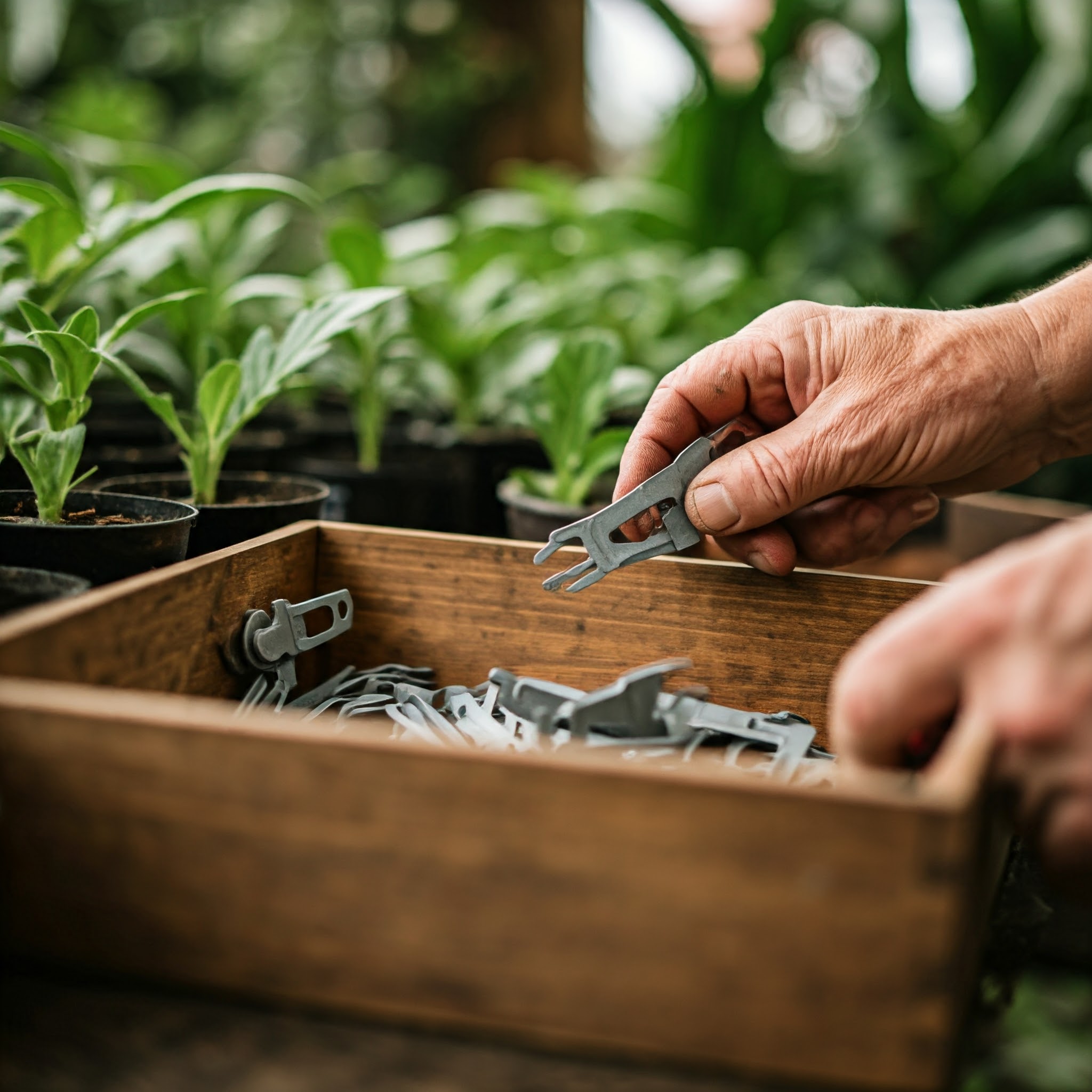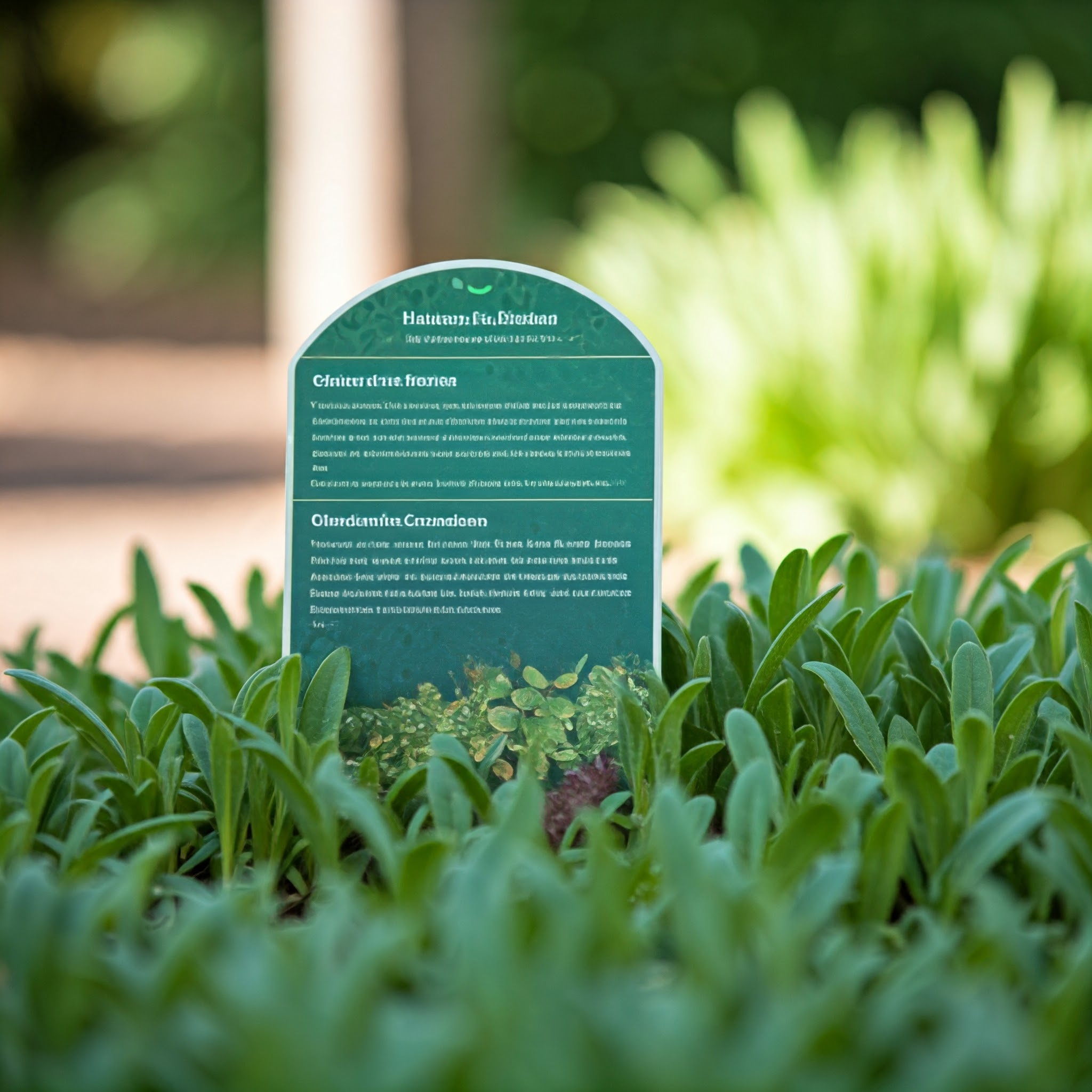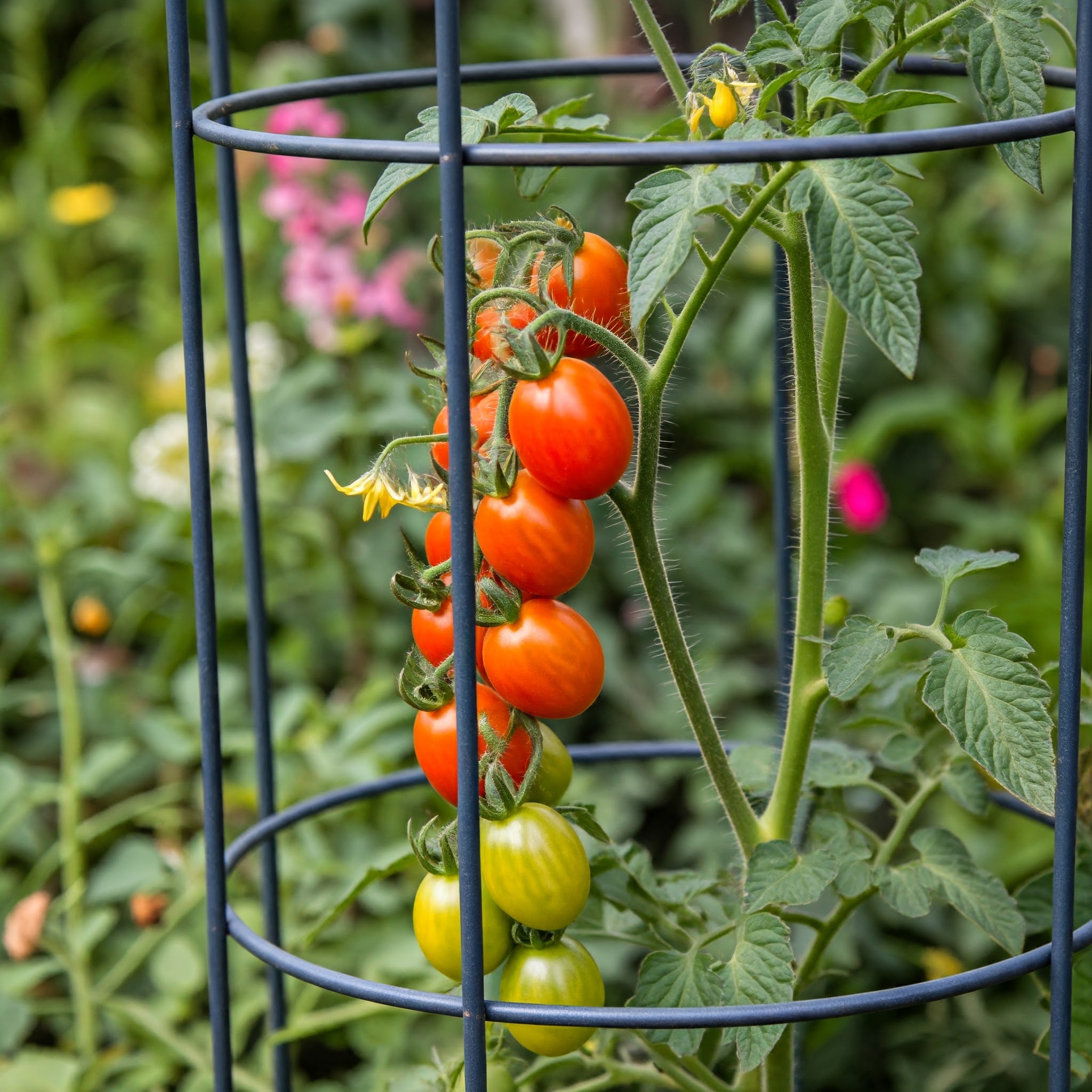As a gardener, you know how frustrating it can be to see your hard work destroyed by pests, harsh weather, or unexpected frosts. You’ve spent countless hours nurturing your plants, only to have them damaged or eaten overnight.
This can be incredibly disheartening, especially when you’ve invested time, effort, and money into creating a beautiful and productive garden. The constant battle against pests and the unpredictable weather can make gardening feel like an uphill struggle.
But what if there was a way to protect your plants and ensure they thrive, regardless of the challenges? Netting and row covers offer a practical and effective solution to safeguard your garden. In this comprehensive guide, I’ll walk you through everything you need to know about using netting and row covers, from choosing the right materials to installation tips and best practices.
What Are Netting & Row Covers?
Netting and row covers are essential tools for any gardener looking to protect their plants from a variety of threats. These materials act as barriers, shielding your plants from pests, extreme weather, and other environmental factors. Let’s dive into the details of what these covers are and how they can benefit your garden.
Definition and Explanation
Netting: Garden netting is a versatile material used to protect plants from pests, birds, and other animals. It comes in various forms, including insect netting, bird netting, and shade cloth. Each type of netting is designed to address specific threats, ensuring your plants remain safe and healthy.
Row Covers: Row covers are fabric-like materials that are draped over plants to provide protection from frost, wind, and insects. They can be made from different materials, such as polypropylene or polyethylene, and come in varying thicknesses to suit different needs. Floating row covers, for example, are lightweight and can be placed directly on plants, while heavier frost protection covers offer more robust protection against cold temperatures.
Different Types of Netting
- Insect Netting: This fine mesh netting is designed to keep out small insects like aphids, whiteflies, and cabbage moths. It allows air, light, and water to pass through, ensuring your plants can still grow healthily while being protected from pests.
- Bird Netting: Bird netting is used to prevent birds from eating fruits, vegetables, and seeds. It is typically made from durable materials like polyethylene and can be draped over plants or structures to create a barrier.
- Shade Cloth: Shade cloth is used to protect plants from excessive sunlight and heat. It comes in different densities, providing varying levels of shade to suit different plants’ needs. This type of netting is particularly useful in hot climates where intense sunlight can damage plants.
Different Types of Row Covers
- Floating Row Covers: These lightweight covers are placed directly on plants and are ideal for protecting against insects and light frost. They are made from breathable materials that allow air, light, and water to reach the plants while providing a barrier against pests.
- Frost Protection Covers: Heavier and more robust, frost protection covers are used to shield plants from cold temperatures and frost. They are typically made from thicker materials and can be used to extend the growing season by protecting plants from early or late frosts.
- Hoops and Supports: To use row covers effectively, you may need hoops or supports to hold the covers above the plants. These structures create a tunnel-like environment, providing additional protection and ensuring the covers do not damage the plants.
Benefits of Using Netting & Row Covers
Using netting and row covers in your garden offers numerous benefits, making them a worthwhile investment for any gardener. Here are some of the key advantages:
- Protecting Plants from Pests and Insects: One of the primary benefits of netting and row covers is their ability to keep pests and insects away from your plants. By creating a physical barrier, these covers prevent pests from reaching your plants and causing damage.
- Shielding Plants from Harsh Weather Conditions: Netting and row covers can also protect your plants from extreme weather conditions, such as heavy rain, strong winds, and frost. This protection helps to ensure your plants remain healthy and can continue to grow even in adverse conditions.
- Extending the Growing Season: By using row covers, you can extend the growing season for your plants. Frost protection covers, for example, can protect plants from early or late frosts, allowing you to start planting earlier in the spring and continue harvesting later into the fall.
- Improving Plant Health and Yield: By protecting your plants from pests and harsh weather, netting and row covers can help to improve plant health and increase yield. Healthy plants are more productive, resulting in a more bountiful harvest.
How to Choose the Right Netting & Row Covers
Choosing the right netting and row covers for your garden depends on several factors, including the type of plants you are growing, the specific threats you are facing, and your budget. Here are some tips to help you make the right choice:
- Consider the Material: Different materials offer different levels of protection and durability. For example, polyethylene netting is durable and long-lasting, while polypropylene row covers are lightweight and breathable. Choose a material that suits your needs and budget.
- Size Matters: Ensure the netting or row cover you choose is large enough to cover your plants adequately. Measure your garden beds or plants before purchasing to ensure you get the right size.
- Purpose: Consider what you need the netting or row cover for. If you are looking to protect your plants from insects, insect netting is the best choice. For frost protection, opt for a heavier row cover designed to insulate plants from cold temperatures.
- Product Comparisons: Research and compare different products available in the market. Look for reviews and recommendations from other gardeners to find the best options for your needs.
How to Install Netting & Row Covers
Proper installation is crucial to ensure netting and row covers provide effective protection for your plants. Here’s a step-by-step guide to help you install these covers correctly:
- Installing Netting:
- Step 1: Measure the area you need to cover and cut the netting to the appropriate size.
- Step 2: Secure the netting to the ground using stakes or pegs. Ensure the netting is taut and covers the entire area.
- Step 3: If using bird netting, drape it over plants or structures and secure it in place.
- Step 4: Regularly check the netting for any damage or gaps and repair as needed.
- Installing Row Covers:
- Step 1: Measure the area you need to cover and cut the row cover to the appropriate size.
- Step 2: Place hoops or supports over the plants to create a tunnel-like structure.
- Step 3: Drape the row cover over the hoops or supports, ensuring it covers the entire area.
- Step 4: Secure the row cover to the ground using stakes or pegs. Ensure the cover is taut and does not touch the plants.
- Step 5: Regularly check the row cover for any damage or gaps and repair as needed.
DIY Garden Netting & Row Cover Solutions
If you’re looking for cost-effective and creative ways to protect your garden, DIY netting and row cover solutions can be a great option. Here are some ideas to get you started:
- DIY Insect Netting:
- Materials Needed: Fine mesh fabric, scissors, stakes or pegs.
- Instructions: Cut the mesh fabric to the desired size and secure it to the ground using stakes or pegs. Ensure the fabric is taut and covers the entire area.
- DIY Bird Netting:
- Materials Needed: Durable mesh fabric, scissors, stakes or pegs.
- Instructions: Cut the mesh fabric to the desired size and drape it over plants or structures. Secure the fabric in place using stakes or pegs.
- DIY Shade Cloth:
- Materials Needed: Shade cloth fabric, scissors, stakes or pegs.
- Instructions: Cut the shade cloth to the desired size and secure it to the ground or structures using stakes or pegs. Ensure the cloth provides adequate shade for your plants.
- DIY Floating Row Covers:
- Materials Needed: Lightweight fabric, scissors, stakes or pegs.
- Instructions: Cut the fabric to the desired size and place it directly on plants. Secure the fabric to the ground using stakes or pegs.
- DIY Frost Protection Covers:
- Materials Needed: Thick fabric, scissors, stakes or pegs.
- Instructions: Cut the fabric to the desired size and drape it over plants or structures. Secure the fabric in place using stakes or pegs.
Seasonal Use of Netting & Row Covers
Netting and row covers can be used throughout the year to protect your plants from various threats. Here’s how to use these covers in different seasons:
- Spring:
- Use floating row covers to protect young plants from early frosts and insects.
- Install insect netting to keep pests away from newly planted vegetables.
- Summer:
- Use shade cloth to protect plants from excessive sunlight and heat.
- Install bird netting to prevent birds from eating fruits and vegetables.
- Fall:
- Use frost protection covers to shield plants from early frosts.
- Install row covers to extend the growing season by protecting plants from late frosts.
- Winter:
- Use frost protection covers to insulate plants from cold temperatures.
- Install row covers to protect winter crops from harsh weather conditions.
Common Problems and Solutions
Even with the best netting and row covers, you may encounter some common issues. Here are some problems you might face and solutions to address them:
- Pests Getting Through the Netting:
- Problem: Small insects or pests may find their way through the netting.
- Solution: Ensure the netting is properly secured and check for any gaps or holes. Use finer mesh netting for smaller pests.
- Wind Damage:
- Problem: Strong winds can damage or displace netting and row covers.
- Solution: Secure the covers with additional stakes or pegs. Consider using heavier materials for better stability.
- Water Accumulation:
- Problem: Water can accumulate on top of row covers, causing them to sag.
- Solution: Ensure the covers are taut and properly supported. Create drainage channels to prevent water buildup.
- Heat Buildup Under Covers:
- Problem: Row covers can trap heat, potentially harming plants.
- Solution: Use breathable materials and ensure proper ventilation. Remove covers during the hottest part of the day if necessary.
- Difficulty in Accessing Plants:
- Problem: Covers can make it challenging to access plants for watering, weeding, or harvesting.
- Solution: Use easily removable covers or create access points. Plan your garden layout to accommodate covered areas.
Best Practices for Using Netting & Row Covers
To get the most out of your netting and row covers, follow these best practices:
- Regular Maintenance and Inspection:
- Check covers regularly for any damage or wear and tear.
- Repair or replace damaged covers promptly to ensure continued protection.
- Combining Netting and Row Covers with Other Methods:
- Use netting and row covers in conjunction with other pest control and protection methods, such as companion planting and organic pesticides.
- Maximizing Effectiveness:
- Ensure covers are properly installed and secured.
- Adjust covers as needed to accommodate plant growth and changing weather conditions.
- Proper Storage:
- Store covers in a dry, cool place when not in use.
- Clean and dry covers before storing to prevent mold and mildew.
FAQs About Netting & Row Covers
To use netting and row covers effectively, ensure they are properly installed and secured. Regularly check for any damage and repair as needed. Combine with other protection methods for best results.
The best netting and row covers depend on your specific needs. Insect netting is ideal for pest control, while frost protection covers are best for extending the growing season. Consider the material, size, and purpose when choosing covers.
Netting and row covers create a physical barrier that protects plants from pests, harsh weather, and other environmental factors. They help to ensure plants remain healthy and productive.
Yes, you can make your own garden netting and row covers using materials like mesh fabric, shade cloth, and lightweight fabric. DIY solutions can be cost-effective and tailored to your specific needs.
The benefits include protecting plants from pests and harsh weather, extending the growing season, and improving plant health and yield. They are a practical and effective solution for any gardener.
Insect netting and floating row covers are ideal for protecting vegetables from pests and light frost. Shade cloth can be used to protect vegetables from excessive sunlight and heat.
Conclusion
Using netting and row covers is a practical and effective way to protect your garden from pests, harsh weather, and other environmental threats. By choosing the right materials, installing them correctly, and following best practices, you can ensure your plants remain healthy and productive throughout the growing season. Whether you opt for ready-made products or DIY solutions, netting and row covers are a valuable addition to any gardener’s toolkit.
If you found this guide helpful, consider subscribing to our blog for more gardening tips and advice. Feel free to leave comments or questions below, and share your experiences with netting and row covers. For more information on recommended products and further reading, check out the links provided.







